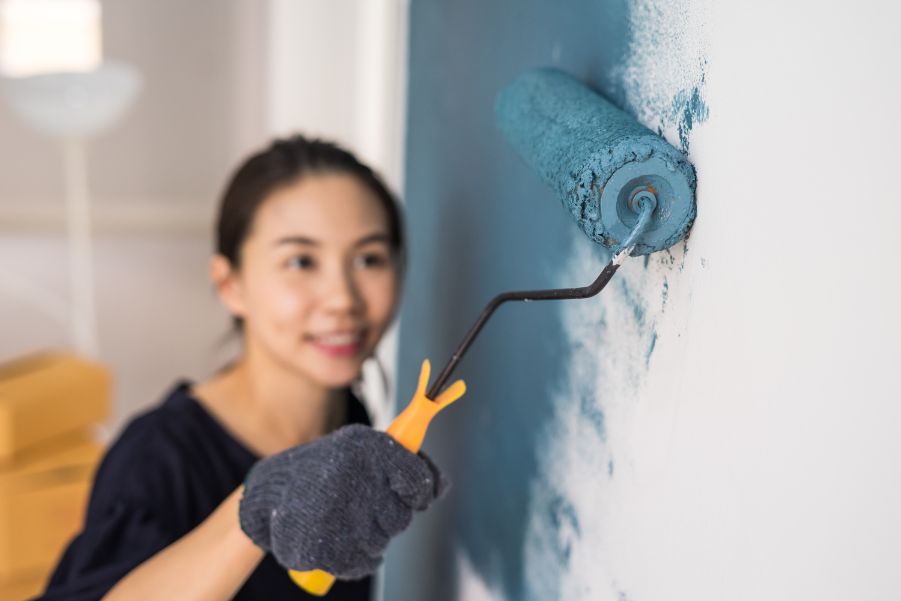What’s the Difference Between Interior and Exterior Paint?

Twenty years ago, if you asked the question, “What’s the difference between interior and exterior paint?” you’d have gotten this answer: not much. But now, there’s a wider gulf between the two paint types, and that gulf is based on two main things: weather conditions and VOCs. Here’s the rundown on the differences – and why you shouldn’t use interior and exterior paint interchangeably.
First, the Basics
The two significant differences between these types of paint come down to durability and off-gassing. Exterior paint has to withstand the weather without peeling. From summer sun to winter snow to everything in between, this paint’s number one quality is durability.
Interior paints don’t have to be as strong, though they need to resist everyday wear and tear. Interior paints also have a lower level of volatile organic compounds or VOCs. These chemicals can irritate the eyes, nose, and throat, cause breathing problems, damage your organs and central nervous system, and, in some cases, cause cancer. So, it’s no surprise that you don’t want them in your home.
Know Thy Paint Chemistry
Knowing a little about the paint can help you understand how interior and exterior paint differ. Paint is made to cover a variety of surfaces, from wood to drywall to metal. Its basic recipe includes solvents, pigments, resins, and additives. These chemicals float in a solvent, which is what makes the paint wet. When you roll it onto a wall, the solvent evaporates, leaving the solids behind. The pigment, which the resin binds to the surface, creates the color. Additives can make the paint mildew resistant, easier to clean, and quicker to dry.
Oil Versus Latex
Oil-based paint is made with either alkyd (a type of resin) or oil (usually linseed). It contains higher levels of VOCs and can off-gas for years. As a result, some states prohibit its use indoors, which means it’s primarily on exteriors, particularly exterior trim and woodwork.
Latex is a combination of latex (natural or synthetic) and acrylic plastic. This water-soluble combination, both hard and flexible, has lower VOC levels. It’s the go-to paint for both interiors and exteriors now.
Interior and Exterior Latex
Remember those additives and binders we talked about earlier? That’s where the rubber (or latex) meets the road. The heavy-duty additives and binders in exterior paint are designed to withstand harsh weather. This results in a coating that is thicker than the interior latex.
Similarly, interior latex, which lacks these more durable additives, wouldn’t hold up to 90-degree heat or freezing sleet. The color would fade, the paint would deteriorate quickly, and you would find yourself repainting a lot sooner than you wanted.
With more than 100,000 walls painted, we know how to choose the best paint – and house painters – for your project. We hand select local crews through our thorough vetting process, all, so you don’t have to. Learn more about our house painting services today.



